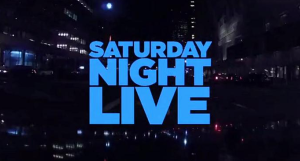Hitting theaters later this year is the latest adaptation of Stephen King‘s epic novel It, which features a group of kids who battle against a supernatural creature that takes the shape of the terrifying clown Pennywise. Originally played by Tim Curry in the 1990 mini-series, the new R-rated version of the character is played by Bill Skarsgard, who has literal and figurative big shoes to fill.
Curry’s performance of the character might be one of the defining killer clowns in the world of movies and TV, but he’s far from being the first.
Videos by PopCulture.com
During an interview with the Bangor News in Maine, Stephen King explained why he chose the image of a clown for his novel, best describing the impact the image has on many.
“I chose Pennywise the Clown as the face which the monster originally shows the kiddies because kids love clowns, but they also fear them,” King revealed. “Clowns with their white faces and red lips are so different and so grotesque compared to ‘normal’ people. Take a little kid to the circus and show him a clown, he’s more apt to scream with fear than laugh.”
The idea of clowns and court jesters date back centuries, so it’s hard to pinpoint exactly when people first began to fear the figures meant to create joy, but considering horror films’ proclivity for incorporating clown imagery, it’s safe to say clowns might be experiencing their worst perception in recent years.
Scroll down to see some of the most terrifying clowns in history!
Pogo the Clown (John Wayne Gacy)
Between 1972 and 1978, John Wayne Gacy raped, tortured, and murdered over 30 young men and teenage boys in Chicago, burying many of them in his basement. Gacy reportedly went to train stations and bus depots in downtown Chicago and offered young men a place to stay, only to take them back to his home and strangle them. The murderer spent 12 years on death row before ultimately being executed in 1994.
Another one of Gacy’s pastimes in the ’70s was dressing as Pogo the Clown to entertain children at local events around the community, with no one aware of his dark secret. Interestingly, being a self-taught clown and having to learn to apply his own makeup, many in the clown community pointed out that his makeup featured sharp edges and corners, while other clowns learned this type of application could scare children and knew to round off the corners of all their makeups.
Gacy’s seeming mundane lifestyle and efforts to bring joy to young children would mark one of the most famous and long-lasting images of clowns that hide dark secrets behind jovial makeup, possibly being the inspiration for so many stories of scary clowns.

Poltergeist Clown
After a family moves into a home at a price that’s too good to be true, they soon realize exactly why the cost was so low. During a terrifying thunderstorm one evening, the family’s youngest daughter, Carol Anne, is taken captive by spirits and transported to another realm, causing her family to tap experts in the realm of the paranormal to bring her back.
Despite the young girl’s claims of “They’re here” being one of the most memorable elements of the film, another would be the clown doll that terrorizes the children on that fateful night.
Tapping both into our fears of clowns and dolls, the clown in question scampered around the young children’s room, extending its long, pinstriped arms out from under a bed, in addition to a disembodied voice luring the children in closer.

Pennywise
Stephen King’s novel It was published in 1986 but, due to it being over 1,200 pages long, didn’t immediately enter pop culture’s zeitgeist.
Four years later, Tim Curry donned clown makeup to portray the terrifying entity that terrorized the children of Derry, ME, enticing them with his bright red balloon. Being a made-for-TV two-part series, the adaptation doesn’t get to lean fully into the more horrifying elements of the book, nor does the film production value hold up all that well in 2017.
The standout performance of the mini-series is clearly Curry, who fully embraced the seemingly innocent and playful idea of a clown, with the adaptation using the rest of the film’s narrative and editing to give context as to why Pennywise frightened the story’s protagonists.
Nearly 30 years later, Pennywise is often the go-to example given when people reveal a fear of clowns.

Zeebo
Following in the footsteps of shows like Tales from the Darkside and Tales from the Crypt, Nickelodeon gave young audiences their very own serialized horror series, Are You Afraid of the Dark?, which featured teens regularly telling stories around a campfire in hopes of frightening one another.
In the episode “The Tale of Laughing in the Dark,” a teen is dared to go to the local carnival and steal the nose off of Zeebo the clown, an animatronic prop that resides in one of the haunted house rides. After stealing the nose, the nose thief believes he is being haunted by a clown who had died in the amusement park 70 years earlier, receiving phone calls where a voice demands, “Give it back,” and having a balloon appear in his room saying “Give it back.”
Despite the show not showing anything too horrifying in the episode, the iconography of clowns proved to be intimidating enough to make for an effective ghost story.

Captain Spaulding
Debuting in Rob Zombie’s House of 1000 Corpses, Sid Haig’s performance of Captain Spaulding gave us the combination of both elements of John Wayne Gacy’s persona, with Spaulding delivering dorky puns and presenting a horrifying appearance.
In the first film, Spaulding mostly served as an instigating factor in the narrative, running a roadside “House of Horrors” that educated unsuspecting tourists about the legend of Dr. Satan, resulting in those characters colliding head-on with the sadistic Firefly family. Haig revived the character for The Devil’s Rejects, and, although he dons the clown makeup early on in the film, he spends most of the film terrorizing a family he takes hostage in a motel room.
Captain Spaulding’s acts while wearing clown makeup might not be the most horrifying on this list, but seeing his true villainous nature emerge in Devil’s Rejects remind you the dark deeds an entertainer is capable of once the makeup gets washed off.

Twisty
Despite his horrifying images, American Horror Story‘s Twisty is one of the few clowns to have a tragic backstory that led to his unwanted visage of horror.
As one of the most popular attractions at a carnival, other attractions began spreading rumors about Twisty involving his molestation of children. Twisty eventually left the carnival behind, aiming to start a toy business, only for the rumors to follow him. Fed up with his life, Twisty attempted suicide with a shotgun, but the act only resulted in him blowing off the lower portion of his face, adopting a smiling mask to cover his disfigurement.
Twisty only became more horrifying, as he began to kidnap children in order to “save” them from their mean parents, eventually embracing the persona that others fictionalized around the carnival.

MORE NEWS:








